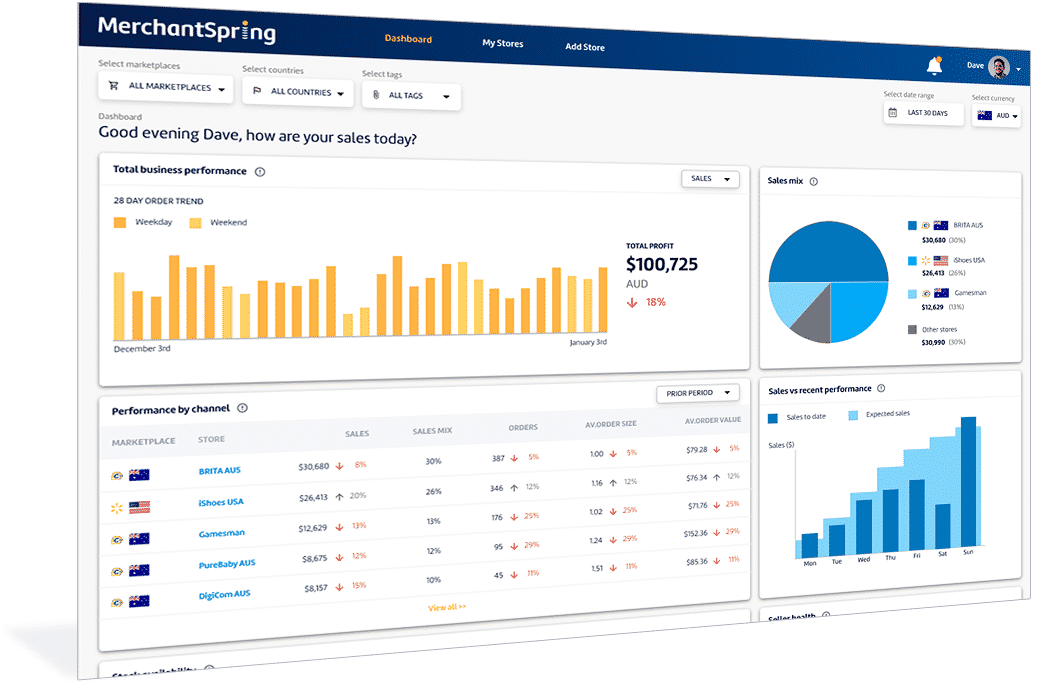How VAT can impact your profitability
Deciding on your pricing strategy is difficult enough in regular business scenarios – making sure your product or service is correctly priced can be the difference between profitability and losses. This issue intensifies when you are selling online to customers in various jurisdictions and have VAT or similar indirect tax obligations to consider: not only do you have to know when to charge VAT, but charging the incorrect amount of VAT can impact your profitability significantly.
B2B vs. B2C
Once you are registered for VAT in a country, most of your sales to or from that country will need to have VAT added. The VAT you add to your sales price is not your revenue – it is tax that is owed to the local authorities and is therefore a liability. The total VAT charged on sales (known as “output tax”) must be reported in the VAT return filing (usually due monthly or quarterly) and paid to the relevant tax office.
For example, if you are registered for VAT in France where the standard VAT rate is 20%, you must add 20% to your ‘Net’ selling price and you are effectively collecting this tax on behalf of the government. If your selling price is $100 (this is the ‘net’ price), you need to add 20% of $100 and charge the customer a total of $120 (this is the ‘gross’ price). 100 is revenue for your company and $20 is owed to the tax man.
The difference to your customers is crucial: a VAT registered business customer can claim back all output VAT it is charged (known as input VAT when considered from their perspective). Therefore, a business customer only considers the NET amount when evaluating a sales price. This makes “B2B” sales simpler to deal with from a VAT and profitability perspective.
However, a private individual has no ability to recover VAT and therefore for B2C sales, the customer only considers the total gross price. If you determine that your customers are willing to pay $100 for a product, if you suddenly add 20% of VAT to the sales price and charge them $120 – it can create a myriad of problems. Therefore, it is vital to advertise your B2C sales as gross, or VAT-inclusive to avoid these commercial pitfalls.
B2C Sales: Universal Pricing vs. Country-Specific Prices
When selling online, your customers see a price as you advertise it to them on your website or selling platform. As explained above, B2C customers only consider the gross price when deciding whether to buy or not. Therefore, it is crucial to your business that you are able to display the exact price including tax online.
The problem with this is that tax rates are different depending on where the customer is based – in certain cases, tax rates can even be different within a single country. Therefore, if you advertise a price of $100 to a customer based in Sweden (where the VAT rate is 25%), the same item for $100 sold to a customer in Switzerland would have a VAT rate of only 7.7%.
If your sales price displayed includes taxes, it should be obvious to see that the NET price the seller will receive will be significantly less in Sweden than in Switzerland. This only applies if the seller uses Universal Pricing – displaying the same gross selling price online regardless of where the customer is based. In the example above, both the Swede and the Swiss see $100 as the price.
The other option is to advertise the NET price (for example $80), and then add the Vat afterwards. Therefore, customers in Sweden would see $80 + 25% VAT = 100 gross price, but the Swiss buyer would see $80 + 7.7% VAT = $86.16. As you can see, the gross selling price is lower in Switzerland even though your net sales price is the same. Using this country-specific methodology is obviously better for the seller as it allows her to potentially change the NET price depending on the VAT rate in a country. (Above, she could have increased the NET price in Switzerland to $90 and the total gross price would have still been cheaper than Sweden)
Unfortunately, it is very complex to set up country-specific pricing as this involves complicated logic – both in terms of calculating the VAT rate correctly and ensuring the right prices are displayed on screen depending on where the customer is based. On top of this, many platforms (like Amazon or the Apple Store) do not cater for this option, so sellers are forced into adopting the universal pricing approach.
Imputing Tax vs. Adding Tax “On Top”
We hope it is clear by now why being VAT registered and understanding if and when you need to charge VAT (and what rate to apply) can impact your profitability. If you are not factoring in the correct VAT treatment, you can be found wanting when a tax office comes looking for its tax revenue that you owe them.
When calculating your commercial forecasts, it is important to decide whether you want to start with a NET price and add VAT on top, or if you start with a GROSS price and “impute” the VAT accordingly.
For example, if you sell something in Europe for $1,200 and you do not specify the VAT amount on the sale, it will be assumed by a tax authority that VAT was included in the selling price and the VAT amount the seller owes will be “imputed”. In the case of a $1,200 sale to the UK, the tax office would assume your gross sales price included VAT and calculate the amount payable by “imputing”: $20/$120 * $1,200 = $200 (Don’t worry if you don’t understand the math, the formula works for all countries regardless of the VAT rate).
Using this method means the seller doesn’t have to pay tax out of their own pocket, but rather they pay the tax based on how much money they received from the client. (which affects their net sales revenue)
In the US and Canada, the gross sales price quoted is assumed to exclude taxes, and therefore the tax liability payable is calculated in a simpler way. For example, in British Columbia (in Canada) where the GST rate is 12%, a gross sale of $1,200 would attract an additional tax of 12% x $1,200 = $144, and therefore the tax amount is higher than in the case of imputation.
However, when advertising your price in the US or Canada you can also state whether the tax is included or not and therefore ensure your tax treatment online is consistent.
Conclusion
It should be obvious that VAT will have a significant impact on your profitability when selling online to customers all over the world. It is, therefore, imperative to factor all of this in when forming your global business model. Having a technology platform that can automate this type of VAT calculation is becoming business critical for online sellers and working with a trusted VAT partner who has practical experience and global reach will ensure that your business isn’t destroyed by poor tax planning.
About the author : VatGlobal
VatGlobal are partnering with MerchantSpring to streamline multi-marketplace operations for cross-border sellers.
If you are struggling to understand if your business needs to register for VAT in a foreign country, VatGlobal offers complimentary assessments that should give you the clarity you need.
Read more about how vsuite can solve all your VAT problems today
Free Tools and resources from VatGlobal
Sign up for a 7-Day Free Trial of MerchantSpring's Amazon Profitability Dashboard
>>>Click Here<<<









Add a Comment